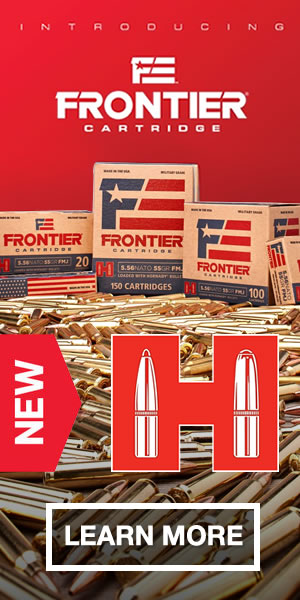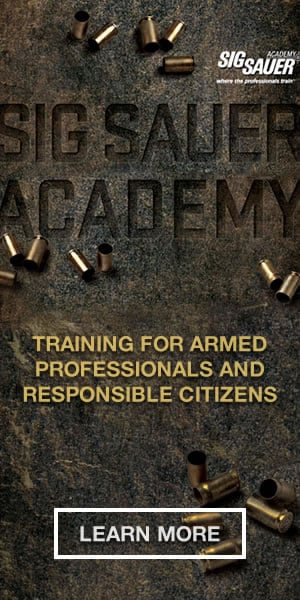The handgun is technically a "one hand gun" originally designed to be fired only from the shooting hand. This was true from the time of matchlock pistols to well into the cartridge gun era. Grip and balance of handguns over that time period all assumed a one hand shooting position (think dueling stance), which explains why the Colt Single Action Army .45 revolver have such a legendary feel. Even when modern handguns like the superbly configured 9mm German Luger and Colt 1911 .45 Automatic came along there was no mention in military training manuals of anything other than one handed forms of combat shooting.
Prior to 1959, there were no consistent two hand combat shooting positions that were in vogue until the "Weaver" shooting stance was developed by L.A. County Sheriff's Deputy Jack Weaver for use in the "Leatherslap" Pistol Matches in California. Weaver's two hand gripping of the handgun was distinctly different than the competing form of a two hand grip where the shooting hand gripped the gun and the support hand gripped the wrist of the shooting. Weaver's grip hand locked the fingers of the short hand over the fingers of the shooting hand. If you watch the original Dirty Harry Movie, you will see Clint Eastwood shooting his Model 29 .44 Magnum in this position on at least one occasion-although more frequently he shoots it with only one hand. Grasping the shooting wrist didn't actually do anything constructive, which is why the Weaver Stance became the premier two handed shooting position.
But this article isn't about shooting technique per se-it's about making sure that the handgun you purchase is first and foremost a one hand gun. Because whether you realize it or not, any shooting conflict you might be involved in comes with little time to prepare for the fight. This means you will likely fight by with one hand only-particularly if lateral movement or advancing movements are needed. One-handed shooting is something that isn't practiced enough.
Many years ago, when I was starting my law enforcement career as an Auxiliary Deputy Sheriff with the Licking County Sheriff's Office, I had a shooting slump for a short period of time. I had failed to pass a firearms qualification when I never had a problem before. I decided to beat the slump by engaging in extensive one hand shooting practice, firing slowly. By focusing first on a strong one hand grip, and the basics of sight alignment and trigger management second, I was able to work out of the slump after a few sessions, and never had a problem qualifying after that.
Some 31 years ago, I had the good fortune to learn a lot more about what constitutes a good one hand shooting grip from a law enforcement firearms instructor who was a legend in the Ohio Highway Patrol-Lieutenant Robby Robison. Lt. Robison had retired not long before I met him and was teaching police firearms training for a now defunct security training school when I was hired to teach under him. I had just become a certified police firearms instructor and was looking forward to making some money on the side doing something I loved.
Lt. Robison was a phenomenal shot with anything that went "boom". But for me, his most amazing performances were done with a Smith and Wesson Model 10 .38 Special police service revolver with a four inch barrel. The man was capable of absolutely deadly accuracy with that handgun.
Even at age 62, he could outshoot anyone I ever knew with that revolver, putting round after round after round through the same hole at distances out to 50 feet-which is the maximum range distance we had to work with. I'm sure he could do pretty much the same thing at 50 yards as well-and he did it quite quickly. I thought I was a pretty fair shot with a revolver-until I met Lt. Robison.
Lt. Robison was very generous with his time, and was a great mentor. Only rarely does one get to work with someone who is willing to share his trade secrets.
One of the most important shooting tips he gave concerned the shooting hand grip-whether the shooting hand alone was used or if it was supported in the two hand Weaver Stance. Lt. Robison told me that in order to be a great shot you literally had to get a "death grip" (also known as a "crush grip") on the gun during the draw and back off just a hair before shooting, otherwise your hand will start to tremble as you hold it, which is why he said to back off a hair until the trembling stopped. It was essential for me to practice this grip acquisition with an empty gun before I engaged in live fire.
Lt. Robison was quite correct, and his "death grip" concept helped improve my shooting. Sadly he died not too many years after we taught those classes, because I had a lot more to learn from him. But that is only part of what I wanted to discuss.
The problem is, if a handguns grip is too large for your hand, you will not be able to get a crush grip on it. Revolvers are the easiest type of handgun to grip in this fashion as their grip does not double as the ammunition storage compartment. This means that selecting a semi-automatic will require greater care with an eye towards proper grip especially if you have medium sized hands. If you have small hands careful selection is even more critical.
When you select a handgun for defensive use, concentrate on how it fits in one hand, not two. Ideally when you grip the handgun, the tip of the middle finger of your shooting hand should be within an inch or so of touching where the base of your thumb joins the palm. With nearly any double action revolver, -even with larger aftermarket grips-my fingertip is within a half inch or less of touching my thumbs base. The same is true for Walther PPKs .380 whose grip design is superb. With a 1911 pistol, which is sized for nearly everyone, my fingertip is within an inch of touching. With a large circumference pistol like my Beretta 92, the gap increases to about 1 1/2 inches, which is at the maximum distance for me.
Several members of the Glock family are also too large for me-such as the .45 caliber Glock 21-even the Short Frame version. While I could shoot it fine with two hands, I was not comfortable with one it while shooting with one hand. This ruled the Glock 21 out as a duty handgun.
But the crush grip isn't just about accuracy-it's about getting the first shot on the threat. If your handgun grip is too large, and you find yourself having to re-adjust your hand into a proper shooting position after you draw, then you have a problem. Also, if you are constantly readjusting your grip to gain control as you fire, then your handgun grip is too large. Using the correctly sized handgun and keeping a crush grip on it with the shooting hand is also important in terms of retaining control of that handgun if someone should attempt to grab it and wrest it from your control. If there is too much gap between your middle fingertip and palm, it will be easier for them to gain control as that area of your hand as your ability to grip is weakened.
To back up what I am saying, it is of interest to note that the new Gen 5 Glock's have done away with the molded in finger grooves on their grip frame, returning to a smaller grip that feels like their Gen 1 and 2 pistols, which like the 1911, allows me a near perfect grasp without the use of the interchangeable backstraps. When you do buy a handgun with interchangeable backstraps, do a lot of work with the smallest backstrap first. You may find that you don't need to enlarge it.
For those of you with large hands there isn't as much of an issue as you should be able to powerfully grip nearly any handgun you pick up. But for those with medium to small size hands it is an issue. Before you purchase a pistol, make sure you can get a crush grip on it, try out a rental gun with only one hand before you buy it. Proceeding and training is this fashion will make shooting with your support hand much easier.


